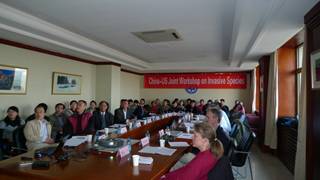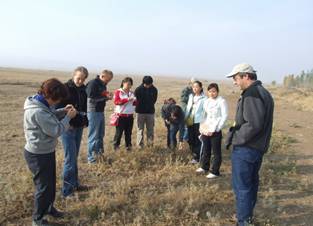China-US Joint Workshop on Invasive Species and Global Chang Was Held In Urumqi
2010-11-05
On October 20-28, 2010, China-US joint workshop on invasive species and global change was held in Urumqi. Six researchers from University of Nevada and Brigham Young University, and relevant researchers from Xinjiang Institute of Ecology and Geography, CAS attended the workshop. This academic activity was funded by the National Science Foundation of America (NSF) and the Natural Science Foundation of China (NSFC).
Firstly, Professor Bob Nowak, University of Nevada, as the project’s chief introduced in detail the main contents and research framework of NSF EAGER (Early-concept Grants for Exploratory Research) proposal. Subsequently, the researchers from different research fields presented their research progresses including the ecological-physiological response and morphological plasticity of desert plants to outside environments, the interactions and feedback mechanisms between microbe and plant roots, and soil, the genetic diversity and morphological variation of invasive species in desert ecosystems, grazing and management of arid ecosystems, and the models of invasive biology at species and landscape scales. Comparative researches from the aspects of niche differentiation, plant plasticity, environmental factors, interspecific competition, reproductive stress, the release of natural enemies, available resources, etc., would be implemented and the models from different scales would be constructed. The aim of the proposal is to provide a theoretical basis for the sustainable management of arid ecosystems
American researchers visited the National Field Observation & Experiment Station for Desert Ecology in Fukang, Mosuowan Desert Research Station, Turpan Desert Botanical Garden, Tianshan Snow-cover & Avalanche Research Station, Heavenly Lake Nature Reserve and Kalamaili Mountain Ungulate Nature Reserve before the workshop. The cooperative research area and main target species were selected based on the investigation of species distribution, main vegetation types and constructive species in desert ecosystems.
At present, the researches of invasive species and its ecological effects in arid land is sparse. Comparative study in the worldwide range is necessary to people to understand the processes and mechanisms of invasive species in arid land. The activies of field investigation and workshop between Chinese and American scientists provide further collaboration in invasive species.

Meeting Scene

Field Investigation



